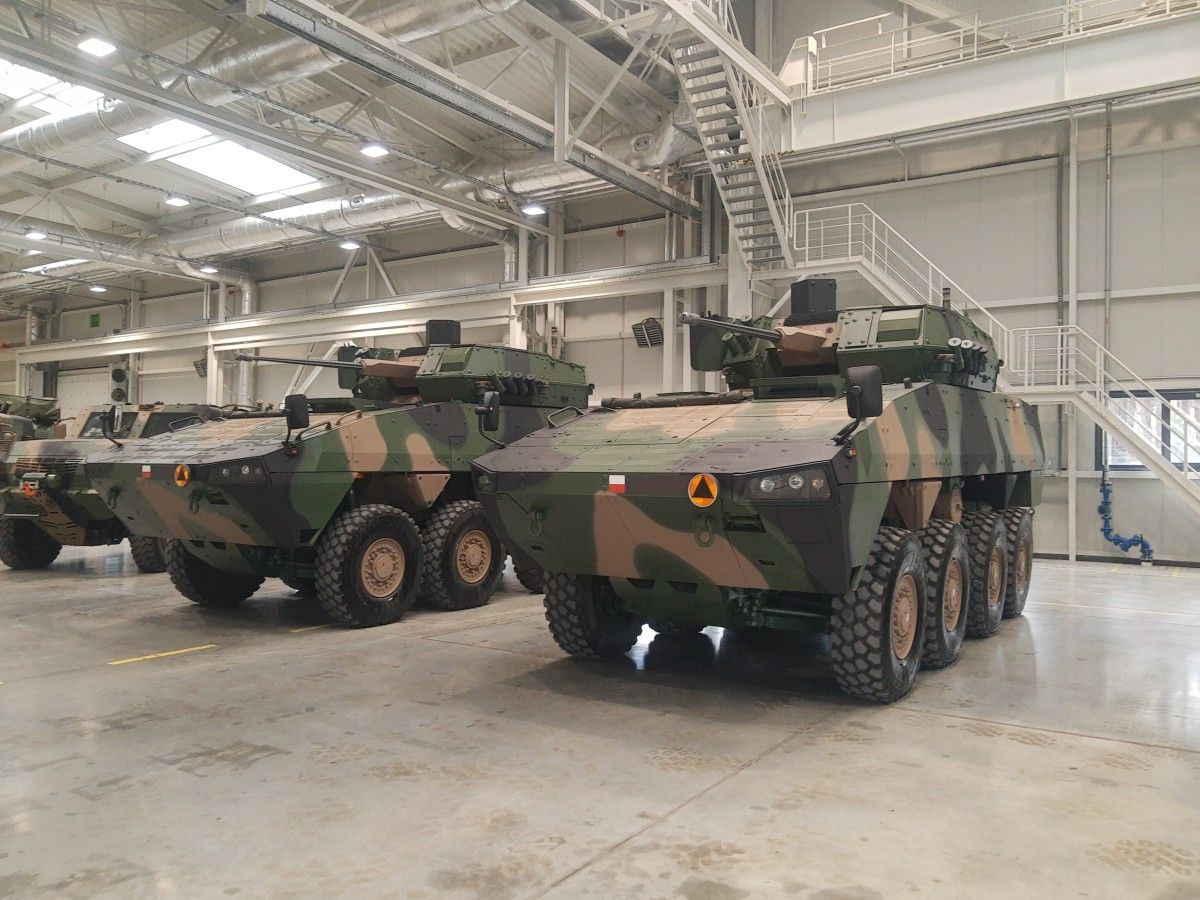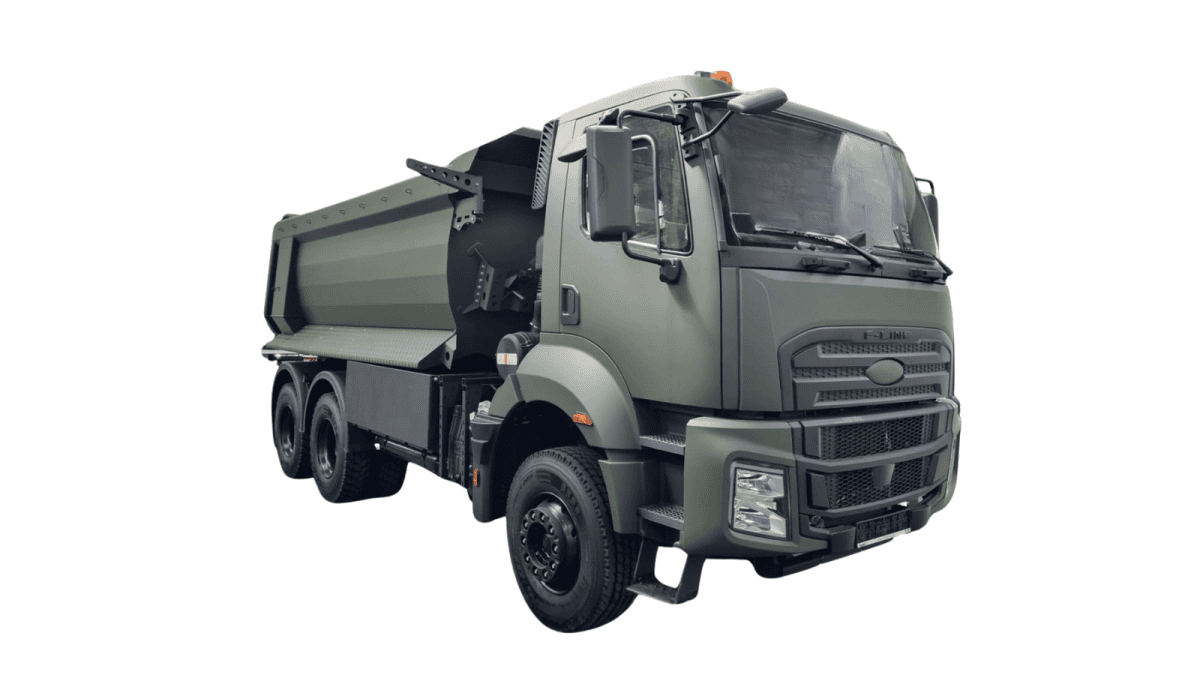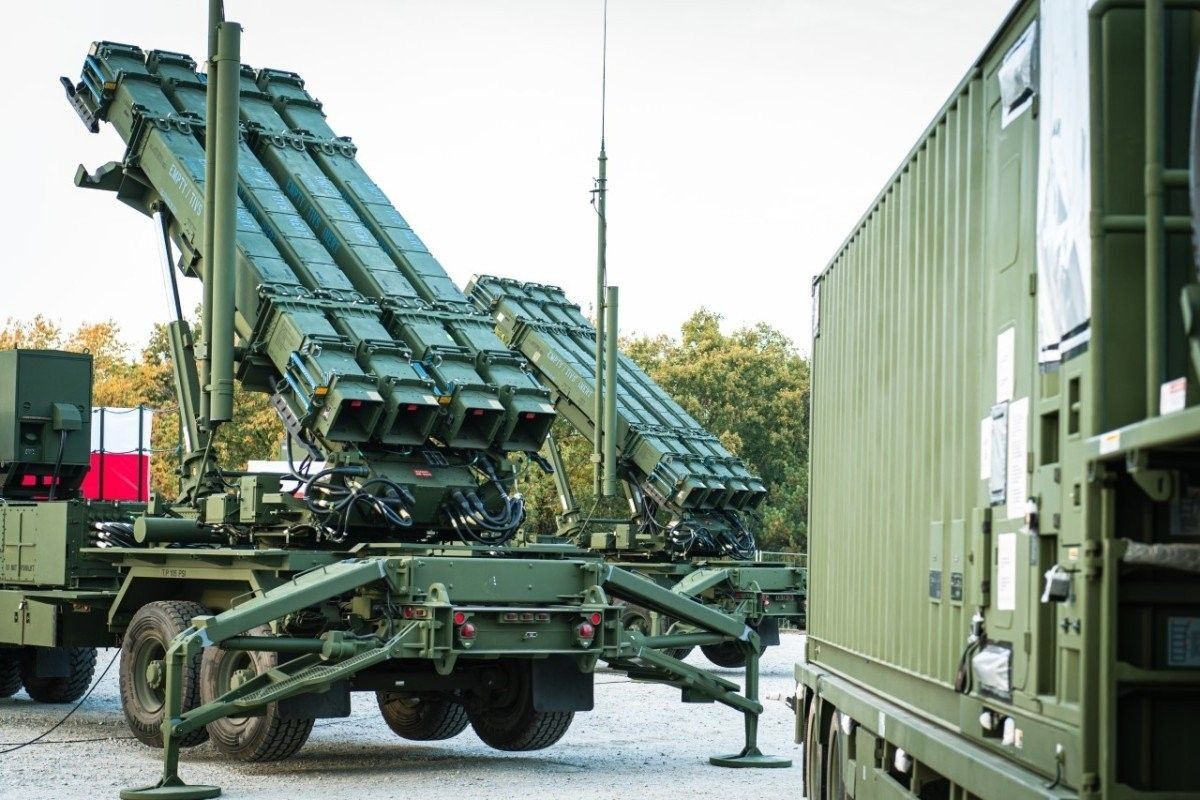
Example three. Inowrocław, the 56th Air Base. Warmate loitering munition operators are training over the vast areas of the airport. One of the tasks is to penetrate the enemy’s territory, conduct reconnaissance, and attack. First, a team goes into action to collect necessary data, based on which the kamikaze drone mission will be programmed. The operator will launch it from a safe distance and... wait for the effect. This one is easy to predict. “Warmate is a weapon of great effectiveness,” admits the instructor from the Territorial Defense Forces Training Center (CSWOT), i.e. the unit that organized the training (due to the specificity of this soldier’s work, we will not disclose his name). The above-mentioned training took place over two years ago. Since then, the number of loitering munition operators in WOT has increased significantly. “The training is ongoing, although we cannot reveal the exact number of soldiers who have completed it,” the instructor points out.
Three examples, different types of troops, nonidentical drones, and... it’s just a small piece of an increasingly expanded puzzle. “Drone troops are the future of the Polish army, the future of all branches of the armed forces. There will be hundreds of thousands of drones in service – flying, ground, and underwater ones,” emphasized Władysław Kosiniak-Kamysz, the Polish Deputy Prime Minister and Minister of National Defense, during the annual settlement and task briefing in the MoND. The first step has already been taken. At the beginning of the year, the Inspectorate of Unmanned Weapon System Forces, headed by BrigGen Mirosław Bodnar, was established in the structures of the Armed Forces General Command. Its goal is to combine UAVs into a coherent system. The staff members make plans, drone operators in frontline troops conduct exercises, and the echoes of the conflict in Ukraine can be heard in the background. To a large extent, it was this conflict that became the catalyst for current changes.
How to Equalize Chances?
For all those who observe the war in Ukraine, it is obvious that with UAVs, the modern battlefield is completely changing. Both sides of the war engage thousands, even hundreds of thousands of unmanned platforms of various types. According to Rustem Umerov, Ukrainian Defense Minister, the Ukrainian Armed Forces acquired as many as 1.5 million UAVs in 2024. In turn, according to a report published in February 2025 by the British think tank RUSI (Royal United Services Institute), drones are expected to be responsible for up to 60-70% of the damage that Ukrainians inflicted on Russian combat systems. This is happening, although – according to the authors of the report – many Ukrainian unmanned systems do not even reach their target due to the specificity of a given front section, low operator skills, weather problems, or signal interference by enemy electronic warfare systems. It is not surprising that the conflict in Ukraine has already been hailed as a ‘drone war’ by experts.

Why are they so widely used? The Ukrainians in this war have already answered this question – drones allow us to eliminate the huge technical advantage that Russia has in traditional means of warfare being a power with global ambitions. “Drones have become one of the most important tools in the fight against the occupant,” President Volodymyr Zelensky said on Telegram a few weeks ago. “They protect the lives of our citizens and compensate for the shortage of other types of weapons, including artillery.”
The matter seems clear not only in the context of the war in Ukraine: unmanned platforms simply prove their worth on the battlefield. The most commonly used drones today – flying platforms – are cheaper than manned machines. It is enough to compare that one combat drone used by the American army, the Reaper, for instance, costs about 64 million US dollars, while for the F-35 aircraft you have to pay about 110 million, not to mention the more than three times expensive F-22 Raptor fighter. Not only that, although the loss of a significant number of drones in purely financial terms may be severe, it is less than the loss of people.
The machines thus become a kind of substitute for manpower, which is rather scarce – as in the case of fighting Ukraine – or which is not at all up for demanding exercises and training grounds, as experienced by many armies in the West. These difficulties may result from the fact that in Western societies, having not experienced war for decades and in general largely pacifist, the ethos of a soldier has eroded, which translates into the fact that professional armies may have (and do have) problems recruiting volunteers for the army. The British army, for instance, faces such a problem. According to official data, in recent years more people have resigned from the service than joined it. About 73,000 soldiers currently remain in active service there, and critics alarmingly state that this is the least number since Napoleonic times. However, the British Ministry of Defense maintains that this is a planned action, carried out in connection with the Future Soldier program adopted in 2021, which assumes that the army will be fewer in numbers, but better armed and prepared for long-range combat with the extensive use of, among others, unmanned platforms.
The Weakest Link
The use of this type of solution also seems beneficial in another respect. Drones, as long as they are properly serviced, work smoothly, can spend long hours on duty, do not get tired, and their efficiency does not decrease over time. Artificial intelligence is beginning to play an important role in this type of system. “The development of AI in unmanned systems is heading towards data collection, independent analysis of information and decision-making,” emphasizes Col Tomasz Gergelewicz, PhD, at the Operations Center of the Ministry of National Defense, and adds: “This applies not only to combat missions. Artificial intelligence can be useful during patrol, reconnaissance, or search and rescue operations. The development and use of AI in military drones is dual: “On the one hand, it is aimed at the capabilities of individual systems that can complete the task more effectively than humans and be fully autonomous. On the other hand, an important issue remains which is the construction of the possibility of interaction between many systems that can complement each other,” explains the Colonel.
Paradoxically, in such an arrangement, a human can become the weakest link. “In the end, autonomy is to be applied in all stages of the mission: from planning the operation, through the collection and analysis of data, to making decisions on the battlefield,” anticipates Col Tomasz Gergelewicz, PhD. This is, of course, extremely risky, if only for ethical reasons. After all, war often provides dilemmas that are difficult to solve on the basis of a zero-one scheme. Thus, among lawyers, politicians, and military personnel, there is a discussion about the limits of freedom that modern systems should be given. Except fully autonomous AI-powered drones are still the melody of the near future. Meanwhile, here and now Ukrainians steadily do their job.
All Eyes on Ukraine
At the beginning of 2022, it seemed that Putin’s troops would soon crush the opponent. However, it quickly turned out that the Russian army was a giant with feet of clay, while the Ukrainians themselves were able to make the most of their strengths. The ongoing capability to conduct strikes far beyond the frontline turned out to be particularly valuable. Ukrainian drones attacked airports, fuel depots, weapons and supply warehouses, and industrial plants located hundreds of kilometers deep into the territory of the Russian Federation. Ukrainians are successful not only in the air but also at sea. Due to the strikes of unmanned surface platforms, the Russian Black Sea Fleet lost a significant part of its pre-war potential.
The Kiev authorities expect that this year Ukrainian industry will be able to produce three, and according to some sources even four million drones. The Ukrainian army no longer relies solely on the help of allies in this matter, although it still, of course, uses, for example, Polish FlyEye observation platforms or Warmate attack platforms. Keeping such a large number of drones in active service is a huge organizational, logistic, as well as training challenge. That is why the Ukrainian army decided to introduce reforms.
In February 2024, President Zelensky signed a document for forming a completely new branch of the armed forces. Four months later, the forces of unmanned systems, commonly known simply as drone forces, were officially launched. They are supposed to coordinate the activities of various entities to make the best use of unmanned technologies. Among the priorities indicated by their commander, Col Vadym Sukharevsky, was the improvement of specialist and UAV operator training. “We will do everything in our power to establish cooperation with civilian schools that train drone operation. We want to systematize the process of training professional operators as much as possible,” said Col Vadym Sukharevsky in June.
Novelties From the World
The world is watching the Ukrainian reform with attention. In other armies, there are rather few similar structures. Unmanned systems are usually used within the existing branches of the armed forces. Much depends on the specifics of the tasks assigned to them. Unmanned aerial platforms are used by both the Air Force, the Land Forces, and the Navy. The naval forces of Turkey, China, and Iran already even own specialized aircraft carriers for operating drones.
The Americans also introduced many novelties at home. Example? The 101st Airborne Division. “In its structures, an experimental reconnaissance company was formed and provided with air and land drones, which to a great extent are AI supported,” indicates Łukasz Przybyło, PhD from the War Studies University (ASzWoj). The United States, like Ukraine, has been considering the formation of separate drone forces. The draft defense law for 2025, i.e. the so-called National Defense Authorization Act, assumed the formation of a drone corps. Although the document submitted to the US Senate ultimately did not include this, the idea may be reconsidered soon.
In May 2024, an idea to form a new branch of armed forces, which would include unmanned systems and UAV defense, was also being considered in Germany Bundestag. For now, however, this project has been suspended. Russia also made attempts to create separate drone forces, according to the project that Andrei Belousov, Russian Minister of Defense, presented in December 2024. Putin’s army has been sending drones over Ukraine for three years, seriously damaging power infrastructure and causing terror among civilians. “Unmanned platforms are a handy way to launch such attacks. They are cheap, you can send many of them out to the battlefield. Even if most of them are knocked down by Ukrainian air defense, some will eventually reach the target,” explains Łukasz Przybyło, PhD. Currently, the Russians intend to go a step further: develop this type of weapon and form a new organizational framework for it. As it turns out, in Ukraine’s experience even its enemies draw.
Bite into the Ground
The drone revolution continues. Ukraine has become a kind of laboratory here, and the soldiers fighting there most strongly feel the effects of the changes. For them, it is often a matter of life and death. Soldiers in the West have more time to learn and rewind their thinking. More time, but not too much, because as the old Roman saying goes: ‘If you want peace, prepare for war’ remains more up-to-date today than ever before.
Poland is making efforts not to stay behind. The Polish Navy has been using unmanned platforms for years. These are primarily autonomous underwater vehicles (AUVs) for searching, identifying, and destroying mines, which are part of the equipment of Kormoran II ships. Recently, they have also been used to monitor critical infrastructure. The Polish Air Force has the Bayraktar surveillance and attack aerial vehicles and leased Reapers. At the end of last year, the Polish Ministry of National Defense placed an order for the American SkyGuardian system.
Modern armies primarily use flying and floating drones, but they also try to develop land systems. “They can be used for reconnaissance, logistics, for the evacuation of the wounded, but also in combat operations,” lists Przemysław Simiński, PhD in Eng. from the University of Siedlce (UwS), also working for the Military Institute of Armored and Automotive Technology (WITPiS). The latter, as the expert emphasizes, “include projects of remote-controlled tower systems equipped with machine guns, small-caliber cannons or guided missiles.” Examples here may be the Type-X platform presented by the Estonian company Milrem Robotics, the American Foster-Miller TALON, or the Goblin platform developed by the Polish company Macro-System. In addition, there is, for example, Macro-System’s GNOM wheeled mini-robot, a land-based circulating munition, detonated by the operator upon approaching the target. To the above list the solutions that combine the advantages of manned and unmanned platforms should be added, one of them is the Taero vehicle, the effect of the cooperation of several Polish companies (WITPiS included), which, depending on the situation, can be controlled remotely or by a driver.
However, the largest number of unmanned platforms are used by forces operating on the ground. Here, too, soldiers strongly feel how much the increased number of drones has changed in this domain. “So far, we have been relying on binoculars and our intuition. Now, we can see our opponent from above. In a relatively short time, we can detect enemy positions and assess their resources. At the same time, in many cases, we can keep our soldiers at a relatively safe distance. This is a huge quality change,” admits the officer who commands the reconnaissance company in the 17th Wielkopolska Mechanized Brigade (17th WBZ) (due to the specificity of his tasks, he wants to stay anonymous). The unit he commands has the FlyEye unmanned aerial system at its disposal. It is a 12-kg drone with a range of over 100 km, of specific design, and with technical solutions that make it difficult for enemy systems to detect. “The UAS can be transported in a backpack and deployed conveniently. With the use of FlyEye, we carry out tasks to the advantage of the brigade. The visuals made by the drone can be transmitted live to the command post. This allows, for example, to set targets for artillery,” the officer explains. FlyEye is not the only UAV. “We also use small commercial drones. They are used at the platoon or even a group level. The commanders of these troops can monitor the activity of their soldiers in real-time. This way, they can watch them up-close, a bit like in computer strategy games,” the officer explains and adds: “There is still a lot to do here. It is a great idea that the army fit their troops with as many micro drones as possible shortly,” the officer emphasizes.
Maj Andrzej Seweryniak, acting commander of the 1st Mechanized Battalion (1st BZ) in the 15th Giżycko Mechanized Brigade (15th BGZ), is of a similar opinion. In recent weeks, his soldiers went to the training ground in Orzysz to participate in exercises with commercial first-person view micro drones and mini-UAVs. “They allow for surveillance tasks not only at the brigade level, but also the battalion. They can be used for combat, for example, with an attached grenade or a TNT cube. This happens in Ukraine, where operators reach for cheap and easily accessible drones, mobile and easy to operate,” emphasizes Maj Andrzej Seweryniak.
The way the ground troops operate is to a great extent affected by loitering munition. The classic example is the Warmate system used by Territorial Defense Forces (TDF). “A missile launched from the launcher is led by the operator or follows a previously set route. Even in this case, however, it can change the flight path at any time or interrupt the mission and hit the target. Warmate strikes with extreme precision, it is also difficult to hide from it. It can, for example, fly into a trench, tranche, or a shelter,” says the CSWOT instructor. This type of weapon can be used to checkmate the opponent in an unprecedented way. “Loitering munition is an excellent tool for when it comes to guarding sensitive communication routes. Warmate can stay in the air for up to an hour. When the enemy column appears, the drone strikes. Its mere presence or at least the probability that it will be there has a deterrent effect,” explains the instructor.
Drones are a double-edged weapon, though. They can seriously help us, but in the hands of the enemy they can pose a mortal threat. The very awareness of this significantly affects the way the troops function. “First of all, it is a matter of the forces movement. Large columns become an easy and valuable target. For that reason, as far as possible, they should be dispersed and move quickly,” explains Maj Andrzej Seweryniak. “My soldiers also know that during longer stops they have to entrench themselves. Colloquially speaking: bite into the ground. The deeper, the better. Any trenches should be additionally covered with beams,” he adds. Camping areas should also be properly masked, and from above as well. Of course, hanging traditional masking nets above them does not quite solve the problem. In addition to cameras, drones usually have thermal and electromagnetic radiation sensors. “To a certain extent, they can be jammed with a new type of Berberys net, but we don’t have many of them,” admits Maj Andrzej Seweryniak.
How to Defend?
Finally, the key thing is that soldiers should have systems that allow them to effectively combat a drone. Air defense systems, helicopters, or combat aircraft are effective for large attack platforms. What about the smaller ones? “These can be shot down with Grom or Piorun missiles. Here, however, you have to think in terms of cost and effect. While it still pays to use a relatively expensive projectile to shoot down the FlyEye, it is more problematic with micro drones. Shotguns seem to be a good solution, which, depending on the type of ammunition, can hit targets at a distance of up to several dozen meters,” explains the commander of the 17th BZ reconnaissance company.
However, the most effective defense is provided by all kinds of electronic warfare systems, so-called jammers, which allow you to interfere with the work of drones. In Ukraine, such solutions are common, in Poland, they are just in the beginning. The army has, among others, Sky CTRL systems, which are used by the 9th and 15th Command Support Brigades (9th and 15th BWD) and the command battalion of the 18th Mechanized Division (18th DZ). Jammers are also to become an important element of the East Shield. This is just the beginning.
Poland is expanding its potential of drones because it is required by the specificity of modern armed conflicts. Although one should not give in to the illusion that a significant number of drones in the army is enough to make an effective and efficient military machine out of it, the current trend will probably not be reversed for a long time.












